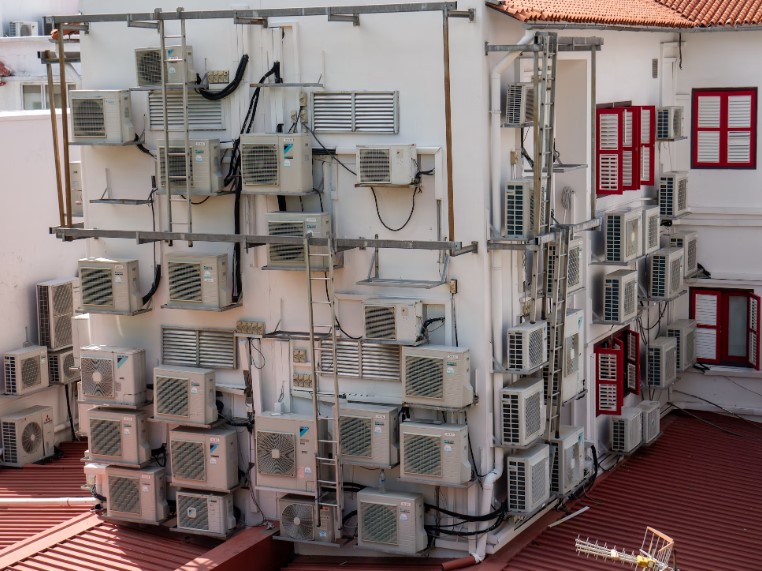When the summer heat kicks in, a malfunctioning air conditioner is the last thing you want to deal with. Fixing an AC unit may seem daunting, but with the right knowledge and tools, it can be straightforward. Here are six practical tips that will help you get your air conditioning system back up and running in no time.
Recognizing Common AC Problems
Before you can fix your AC unit, you need to identify the problem. Common issues include reduced cooling, strange noises, and water leaks. While some AC issues can be fixed with basic DIY skills, others require professional intervention. Certain complex problems like refrigerant leaks, electrical faults, and major component failures should be handled by certified technicians, as the Phoenix AC repair team explains. Attempting to fix these issues on your own can be dangerous and may void your warranty. Always prioritize safety and seek professional help when necessary.
Keep in mind that working with local experts ensures a quicker resolution and prevents further damage to your system. If you live in Phoenix, looking for AC Maintenance Mesa AZ experts can help you find reliable professionals who understand the unique cooling needs of the area. Their expertise ensures that your AC unit runs efficiently, reducing energy costs and preventing unexpected breakdowns during the hottest months.
Step 1: Checking and Replacing Air Filters
One of the simplest yet most effective ways to maintain your AC unit is by regularly checking and replacing the air filters. Dirty filters restrict airflow, reducing the efficiency of your AC and increasing energy consumption. To replace the filters, turn off the unit, locate the filter compartment, and remove the old filters. Insert new, clean filters and ensure they are properly secured. Doing this every one to three months can significantly improve your AC's performance.
Step 2: Cleaning the Coils
The evaporator and condenser coils are crucial components of your AC unit. Over time, they accumulate dirt and grime, which can reduce their efficiency. To clean the coils, first turn off the power to the unit. Use a soft brush to remove loose dirt, then apply a coil cleaner to dissolve stubborn grime. Rinse the coils with water and allow them to dry completely before turning the unit back on. Regular cleaning of the coils can enhance your AC's cooling capacity and prolong its lifespan.
Step 3: Inspecting the Thermostat
A malfunctioning thermostat can lead to inconsistent temperatures and reduced comfort. Start by checking the thermostat settings to ensure they are correct. If the settings are fine, but the AC is not responding, try replacing the batteries in the thermostat. If the problem persists, consider upgrading to a programmable or smart thermostat. These advanced thermostats offer better control over your home's temperature and can help you save on energy bills.
Step 4: Clearing the Drain Line
A clogged drain line can cause water leaks and damage your AC unit. To clear the drain line, locate the access point and use a wet/dry vacuum to remove any blockages. You can also flush the line with a mixture of water and vinegar to dissolve any buildup. Keeping the drain line clear ensures proper drainage and prevents water damage. Homeowners often learn from Air Conditioning Installation experts how this should be done before attempting any major maintenance on their own systems. This guidance not only helps prevent unnecessary damage but also ensures the unit continues to run smoothly throughout the season.
Step 5: Checking Refrigerant Levels
Low refrigerant levels can severely impact your AC's cooling performance. If you suspect a refrigerant leak, it's essential to call a professional technician to inspect and refill the refrigerant. Attempting to handle refrigerants yourself can be hazardous and is often illegal without proper certification. A professional will ensure the refrigerant is at the correct level and that there are no leaks in the system.
Step 6: Ensuring Proper Airflow
Proper airflow is crucial for your AC to function efficiently. Check the vents and ducts for any obstructions such as furniture, curtains, or debris. Ensure that all vents are open and unblocked to allow maximum airflow. Additionally, consider having your ductwork inspected and cleaned by a professional to remove any accumulated dust and debris that could impede airflow.
Maintaining and fixing your AC unit doesn't have to be overwhelming. By following these six practical tips, you can ensure your air conditioning system operates efficiently and effectively. Remember to prioritize safety and seek professional help for complex issues. Regular maintenance not only enhances your comfort but also saves you money and benefits the environment. Start taking care of your AC unit today and enjoy a cool, comfortable home all year round. For further assistance or personalized advice, consider reaching out to a professional technician or joining an online community of fellow homeowners.










